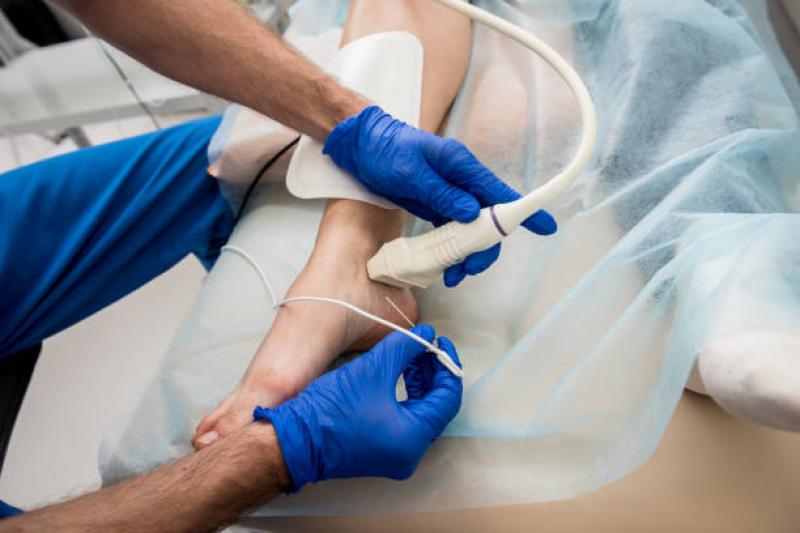Radiofrequency ablation (RFA) devices have revolutionized the landscape of minimally invasive medical treatments by offering precise, effective solutions for a variety of health conditions. These devices utilize high-frequency alternating current to generate heat, which selectively destroys abnormal tissues, providing targeted therapy with minimal damage to surrounding areas. The application of radiofrequency ablation spans numerous medical fields including oncology, cardiology, pain management, and dermatology. Over recent years, advancements in device design, safety features, and procedural techniques have significantly enhanced clinical outcomes, patient recovery times, and overall therapeutic efficacy. With the growing prevalence of chronic diseases and the increasing preference for outpatient procedures, RFA devices continue to experience substantial demand and technological refinement.
Key Technological Innovations Shaping Radiofrequency Ablation Devices Today
Modern Radiofrequency Ablation Device incorporate cutting-edge technologies that optimize energy delivery and enhance procedural precision. Innovations such as temperature-controlled ablation, cooled-tip electrodes, and real-time imaging integration have transformed treatment protocols. Temperature-controlled systems consistently regulate heat to ablate target tissue while preventing thermal injury to adjacent structures, thereby improving safety profiles. Cooled-tip electrodes utilize circulating fluids to dissipate heat, enabling deeper lesion formation without charring, which extends the range of treatable tissue types. Additionally, the integration of ultrasound, fluoroscopy, and computed tomography imaging supports real-time visualization, maneuvering, and confirmation of ablation zones. These advancements not only improve the accuracy of treatments for tumors, cardiac arrhythmias, and chronic pain but also reduce procedure-related complications and enhance patient satisfaction.
Clinical Applications Driving Demand for Radiofrequency Ablation Equipment
The versatility of radiofrequency ablation devices positions them as critical tools across various therapeutic areas, stimulating robust market demand. In oncology, RFA is extensively employed to treat liver, kidney, lung, and bone tumors, especially in patients who are not surgical candidates. By inducing coagulative necrosis, RFA provides a minimally invasive alternative for controlling localized malignancies with shorter hospital stays and fewer complications. Cardiologists utilize RFA devices to manage arrhythmias such as atrial fibrillation and ventricular tachycardia by ablating aberrant conduction pathways within the heart. Pain management specialists apply RFA in procedures targeting nerve tissue responsible for chronic back, neck, and joint pain, offering long-lasting relief without the need for opioid medications. Dermatological uses include the treatment of benign and precancerous skin lesions, where precise tissue destruction is critical. These diverse indications underscore the broad potential and expanding clinical utility driving the device market.
Navigating Through In-Depth Radiofrequency Ablation Market Research Reports
Access to detailed market research reports provides valuable insights into the current trends, growth drivers, regulatory landscapes, and competitive dynamics surrounding radiofrequency ablation devices. These comprehensive analyses examine factors such as emerging technologies, reimbursement policies, geographic market segmentation, and end-user adoption rates. By leveraging such in-depth research, healthcare providers, manufacturers, and investors gain actionable intelligence to make informed decisions about product development, marketing strategies, and expansion opportunities. The reports often highlight key players, recent innovations, and strategic partnerships that are shaping the future of RFA technology. Furthermore, understanding market challenges such as stringent regulatory approvals, pricing pressures, and reimbursement complexities is critical for stakeholders navigating this dynamic space.
Commercial Opportunities and Future Prospects in Radiofrequency Ablation Device Market
The commercial landscape for radiofrequency ablation devices is poised for significant expansion fueled by innovation and growing clinical acceptance. Increasing prevalence of chronic diseases that benefit from minimally invasive interventions, such as cancer and cardiovascular conditions, supports sustained market growth. Investments in R&D aimed at improving device portability, energy efficiency, and ease of use are anticipated to create new market segments. Emerging markets, coupled with rising healthcare expenditure and awareness, represent lucrative opportunities for device manufacturers and distributors. Additionally, collaborations between medical device makers and healthcare institutions accelerate clinical trials and product approvals, opening pathways for rapid adoption. Continuous technological advancements—such as the integration of artificial intelligence to optimize ablation parameters and enhanced imaging modalities—promise to redefine procedural standards and broaden application horizons in the foreseeable future.
Transactional Insights: Purchasing Trends and Adoption in Healthcare Facilities
Healthcare providers are increasingly incorporating radiofrequency ablation devices into their therapeutic armamentarium due to improved clinical outcomes and patient throughput efficiency. Purchase decisions are influenced by factors such as device efficacy, safety features, ease of integration with existing systems, and after-sales support. High initial investment costs are often justified by the reduction in hospitalization duration and complication rates associated with RFA procedures. Hospitals and ambulatory surgical centers favor devices that enable multi-disciplinary applications, maximizing utilization and return on investment. Leasing and financing options are becoming more prevalent, facilitating access to advanced RFA technologies for smaller clinics and specialized practices. Understanding procurement trends and operational budgets is essential for manufacturers seeking to tailor offerings that meet the evolving needs of healthcare facilities, highlighting the intersection between clinical benefits and economic considerations within this sector.
Radiofrequency ablation devices stand at the forefront of minimally invasive therapeutic approaches, driven by continuous innovation and expanding clinical indications. Comprehensive market insights reveal a dynamic environment influenced by technological advancements, diversified applications, and strategic commercial maneuvers. Stakeholders equipped with detailed research and transactional knowledge can navigate this complex landscape effectively, fostering growth opportunities and improving patient care globally.
Get This Report in Japanese Language: ラジオ波焼灼装置
Get This Report in Korean Language: 라디오주파수 절제 장치
Read More Articles Related to this Industry- GREEN LIVING - CONTINUOUS LIFE OF THE 21TH CENTURY
About Author:
Ravina Pandya, Content Writer, has a strong foothold in the market research industry. She specializes in writing well-researched articles from different industries, including food and beverages, information and technology, healthcare, chemical and materials, etc. (https://www.linkedin.com/in/ravina-pandya-1a3984191)
